Clear liquors possess an allure that transcends their transparent appearance. From the captivating purity of vodka to the intricate botanical symphony of gin, these spirits have enchanted imbibers for centuries.
As we embark on a journey into the realm of clear liquors, we discover a world brimming with nuanced flavors, cultural heritage, and refined craftsmanship.
Whether you’re an ardent connoisseur or a curious explorer, this article will unveil the fascinating characteristics of these transparent libations, delving into their origins, production methods, and the myriad ways they are enjoyed across the globe.
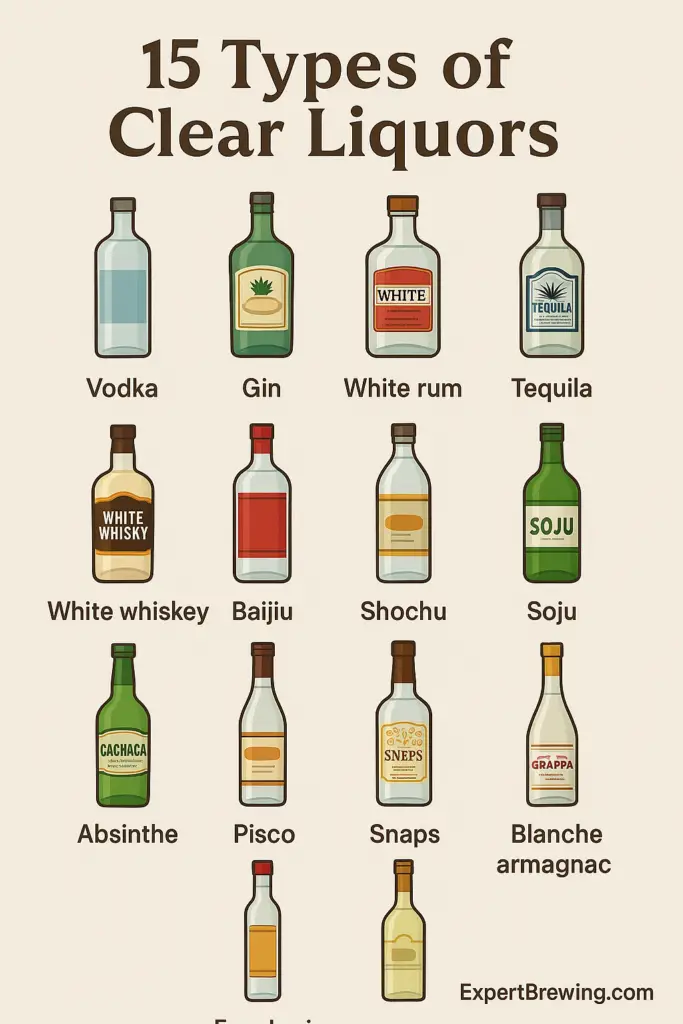
With each glass poured, clear liquors offer a blank canvas upon which bartenders and mixologists craft their masterpieces.
The simplicity of their appearance belies the complex artistry required to produce them. Each variety possesses a distinct personality, drawing from its unique ingredients, distillation techniques, and regional traditions.
From the subtle sweetness of white rum to the fiery intensity of tequila, these spirits offer a diverse array of flavors, ensuring there’s something to suit every palate.
At the forefront of the clear liquor pantheon stands vodka, a spirit renowned for its clarity, smoothness, and versatility.
Often referred to as the “water of life,” vodka’s neutral character allows it to adapt and mingle harmoniously with a wide range of mixers, creating beloved classics like the Martini, Moscow Mule, and Cosmopolitan.
But vodka is just the tip of the iceberg. Delving deeper, we encounter gin, a spirited elixir infused with botanical wonders, and tequila, an agave-based treasure embodying the vibrant spirit of Mexico.
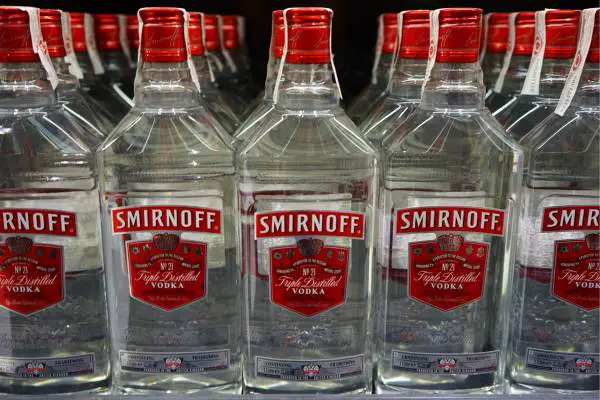
As we explore further, we encounter lesser-known gems, such as Baijiu from China, Soju from Korea, and Aquavit from Scandinavia. These regional specialties exemplify the rich tapestry of global distillation traditions, offering intriguing glimpses into cultural heritage and local customs.
Whether sipped neat, enjoyed in cocktails, or used as a base for culinary concoctions, clear liquors hold a special place in the hearts and glasses of enthusiasts around the world.
In this article, we will embark on a translucent journey, uncovering the secrets behind the production of clear liquors, their distinctive characteristics, and the diverse ways they are cherished and savored. Join us as we lift the veil on these ethereal libations, celebrating the craftsmanship, history, and sheer pleasure they bring to our glasses.
Prepare to be captivated by the captivating world of clear liquors, where the magic lies not only in their transparency but also in the stories they tell and the experiences they inspire. Cheers to a journey filled with the crystal-clear beauty of distilled delights!
1. Vodka
Vodka has been cherished for centuries by enthusiasts globally. It’s very sought-after and comes in many styles.
For example:
- Potato Vodka from Poland, Russia, Ukraine, and Belarus
- Wheat Vodka from Russia, Sweden, and Finland
- Rye Vodka from Poland, Russia, Sweden, Slovenia, Belarus, Ukraine, Lithuania, Estonia, Finland, Iceland, Hungary, and Czech Republic.
It’s usually made from grains or potatoes and is refined through several steps to get the ideal level of purity. Remarkably, vodka has no smell or taste until it’s blended with fruits or spices.

Next up: Gin may not bring you to sin, but it definitely makes your G&T victorious.
2. Gin
Gin is a clear, aromatic spirit made from juniper berries. Its complexity is due to different production methods, which results in different tastes. Let’s look at some popular types of gin and their unique characteristics.
| Type | Method of Production | Notable Botanicals | Tasting Notes |
| London Dry Gin | Neutral spirits flavored with botanicals during distillation. | Juiper Berries, Coriander Seeds, Angelica Root. | Dry, piney aroma with a hint of citrus. |
| Plymouth Gin | Made in Plymouth England. Less dry than London Dry Gin. | Juiper Berries, Lemon Peel, Orris Root. | Smooth and mellow with hints of spice and earthiness. |
| New Western Dry Gin | Juniper-forward with non-traditional botanicals to provide a unique twist. | Lavender, Cucumber, Elderflower. | Herbal, floral, and fruity with a touch of sweetness. |
| Old Tom Gin | Sweetened with sugar or molasses after distillation. | Juiper Berries, Liquorice Root. | Sweet, malty, and heavy-bodied. |
| Genever Gin | The original style of gin. Aged in oak barrels. | Juiper Berries, Malt Wine. | Similar to whiskey with a rich, malty flavor. |
Gin became popular again in the early 1900s due to its use in classic cocktails. The differences between the types are subtle but important.

Pro Tip: High proof gins are better for classic cocktails like Negroni or Aviation. White rum is a good choice for a pirate-y vibe without the pillaging.
3. White rum
White Rum – a clear liquor made from sugarcane juice or molasses. Fermented and distilled, it’s flavorless and colorless.
Originating from places like Jamaica, Cuba and Puerto Rico, each country has its own unique taste. Jamaica’s is fruity with banana and pineapple notes, Cuba’s has light-bodied vanilla and citrus notes and Puerto Rico’s is dry, crisp and has a hint of coconut.
Plus, it can be aged in oak barrels up to two years, creating even more complex flavour profiles! It’s also an essential ingredient in cocktails like mojitos and daiquiris.
So don’t miss out on white rum’s unique taste – try it in your favourite cocktail recipe today!
4. Tequila (Blanco or Silver)
Tequila (Blanco or Silver) – from Mexico, made from Blue Agave Plant. Clear and with a herbal, earthy, and slightly sweet taste.
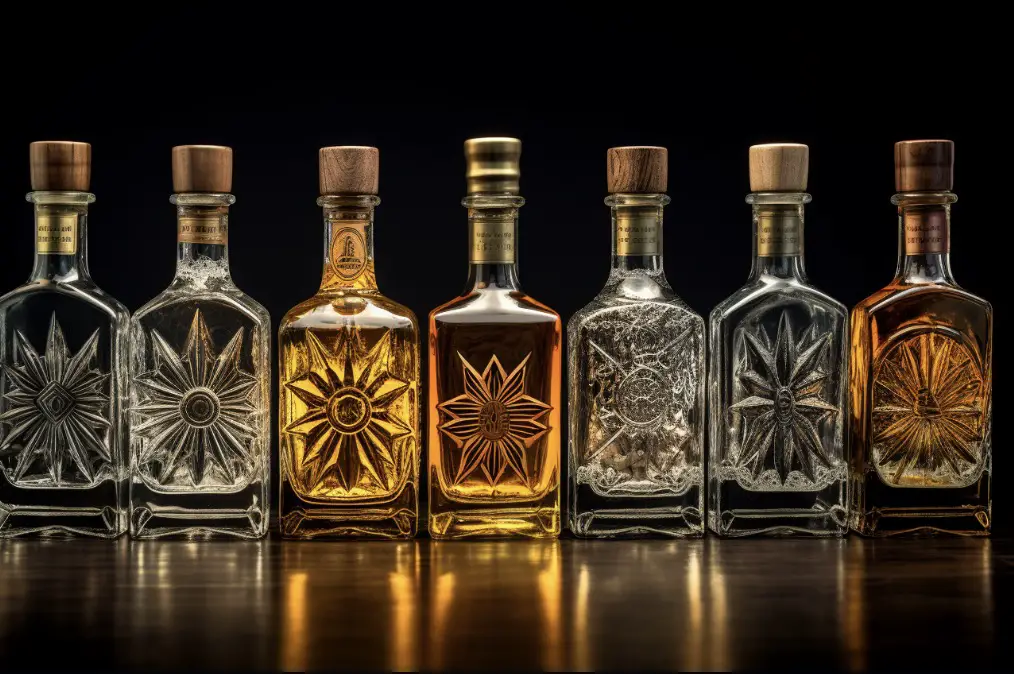
Enjoy neat or as a cocktail! Different types of tequila can be found based on aging such as Anejo and Reposado. Don’t miss out on exploring this unique spirit.
Give it a try – it has a rich cultural heritage and packs a punch!
White whiskey is like a rebellious teen – not quite ready for the barrel, but still strong!
5. White whiskey (Unaged)
White whiskey, otherwise known as moonshine, is an unaged spirit made from grains. Here’s a table that sums up the key info about white whiskey.
| Type | Ingredients | Origin | Distillation Process | Flavor |
|---|---|---|---|---|
| Moonshine | Corn, barley, wheat or rye | USA (Appalachian region) | Copper Pot Still/Column Still, no barrel-aging | Harsh/Fiery/Corn/Grain |
| Samogon | Rye & sugar | Russia | Double-distill & rest | Strong/Aromatic/Rye |
| Baijiu | Sorghum | China | Ferment & steam distill | Earthy/Floral/Sour |
| Brennivin | Barley | Iceland | Single-distill & herb-steep | Astringent & Spicy |
| Tsikoudia | Grape pomace | Greece | Single-distill copper alembic | Influenced by grape varieties |
White whiskey has a unique character since it doesn’t go through barrel-aging. It has powerful scents that are immediately apparent. People think it’s too harsh to use in cocktails, but it can be mixed with other ingredients to make complex drinks.
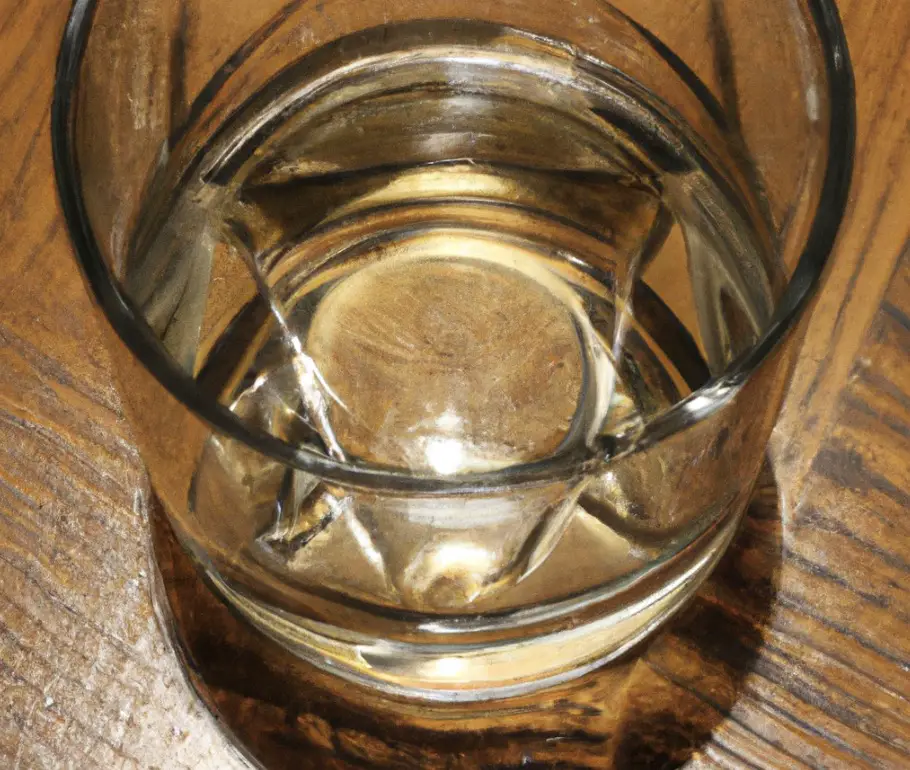
Don’t miss out on trying white whiskey’s boldness! Give it a go and experience the true grain flavor like never before. Move over, vodka, Baijiu is here to make you forget your name with its clear socks-knocking flavor!
6. Baijiu (A Chinese spirit)
Baijiu is an ancient Chinese spirit. It’s made of sorghum, rice, or wheat. Fermentation takes several months, or even years, depending on the type.
A unique detail is that it’s served during formal occasions and business meetings. The cups are called “ganbei” and everyone takes a shot together for unity and good fortune.
Baijiu has been around since the Ming dynasty, originally for medicinal use. However, it became more popular for drinking during the Qing dynasty when distilling techniques improved. It’s still an important part of Chinese culture and cuisine today.
Shochu – when sake just isn’t strong enough to drown out your problems.
7. Shochu (A Japanese distilled beverage)
Shochu, a Japanese distilled beverage, is becoming more popular worldwide because of its unique flavors. It is made by distilling various ingredients, such as rice, barley, sweet potato or wheat. Let’s take a closer look at its production process and ingredients.
Types of Shochu vary by ingredients used. For instance, Kome (Rice) Shochu uses rice and koji mold, and is made through single-distillation with a pot or column still. Mugi (Barley) Shochu requires barley and koji mold, and is made through brewing and double-distillation with a pot or column still.
Wheat or a mixture of wheat and barley with koji mold are needed to make Iki (Wheat) Shochu, which must be spiral hopper type-distilled with stainless steel distillation equipment. Soba (Buckwheat) Shochu is made through mixed fermentation and double-distilled with a low-pressure artisanal vacuum still machine.
Lastly, for Kokuto (Brown Sugar) Shochu, crushed stalks from kōji-making with brown sugar are brewed, then single-distilled with either a batch or continuous distillation process. Imo (Sweet Potato) Shochu requires sweet potato and koji mold, and is made through brewing and single-distillation using a pot or column still.
Shochu’s alcohol content ranges from 25% to 45%. You can enjoy it on the rocks, mixed with soda or tonic water, or straight up like whiskey. We highly recommend you try it, so you can experience all the aromatic compounds this unique Japanese alcohol culture has to offer. Cheers! Get ready to So-ju the night away, but don’t blame the clear liquor if you end up bowing to your toilet!
8. Soju (A Korean distilled beverage)
Soju is a Korean distilled beverage, around since the 14th century. It’s made with rice, wheat, barley, and water. Not only popular in Korea, but across the world! You can enjoy Soju as a neat shot or mix it with other drinks to make cocktails.

It has a unique taste and aroma, making it an interesting choice for those wanting to explore different kinds of alcohol. It’s often likened to vodka due to its high alcohol content, yet soju is made from many different base ingredients.
To experience it like the Koreans do, serve chilled and take small shots – Kampai! Drink enough cachaça and soon you’ll be samba-ing, or at least stumbling around like you are.
9. Cachaça (A Brazilian spirit)
Cachaça is a Brazilian spirit that has been gaining popularity due to its zesty kick it adds to cocktails. It’s distilled from sugar cane juice and has a unique flavor profile. To be considered authentic, cachaça must be produced in Brazil. There are over 4,000 different brands available.
Experience cachaça’s spicy and sweet flavors! Add it to a classic caipirinha or use it as a base for tropical cocktails. Your taste buds will love it! Don’t miss out on this unique experience – try cachaça now! Pisco may not answer your questions, but it’ll make you forget them.
10. Pisco (A South American brandy)
Pisco – a South American brandy with a distinct taste – is made in Peru and Chile from specific grapes. It has an alcohol content of 38-48%, and a color that’s clear or slightly yellowish.

This unique liquor undergoes a process called single distillation – it’s only distilled once, unlike other spirits. Pisco has a smooth flavor with notes of fruit and floral undertones.
If you order a Pisco Sour at a bar or restaurant, ask if they use Peruvian or Chilean Pisco – each country has its own flavor. Finally, forget the long winter of Scandinavia and enjoy a delicious Pisco!
11. Aquavit (A Scandinavian distilled spirit)
Aquavit is a Scandi-style spirit renowned for its crisp refreshment. It’s typically made with caraway seeds, but other herbs & spices can be added to make unique versions. Here’s all you need to know about Aquavit:
- Name: Aquavit.
- Country of Origin: Scandinavia.
- Main Ingredient: Caraway seeds.
- Flavors: Dill, coriander, anise, fennel & citrus.
- Alcohol Content: 40% ABV.
- Serving Suggestions: Chilled in small glasses, usually with pickled herring or cured salmon.
Aquavit is aged in oak barrels, which gives it a subtle smoky flavor & enhances its spicy notes. It’s also becoming popular in craft cocktails, an example being “The Viking” – Aquavit, lime juice & elderflower liqueur.
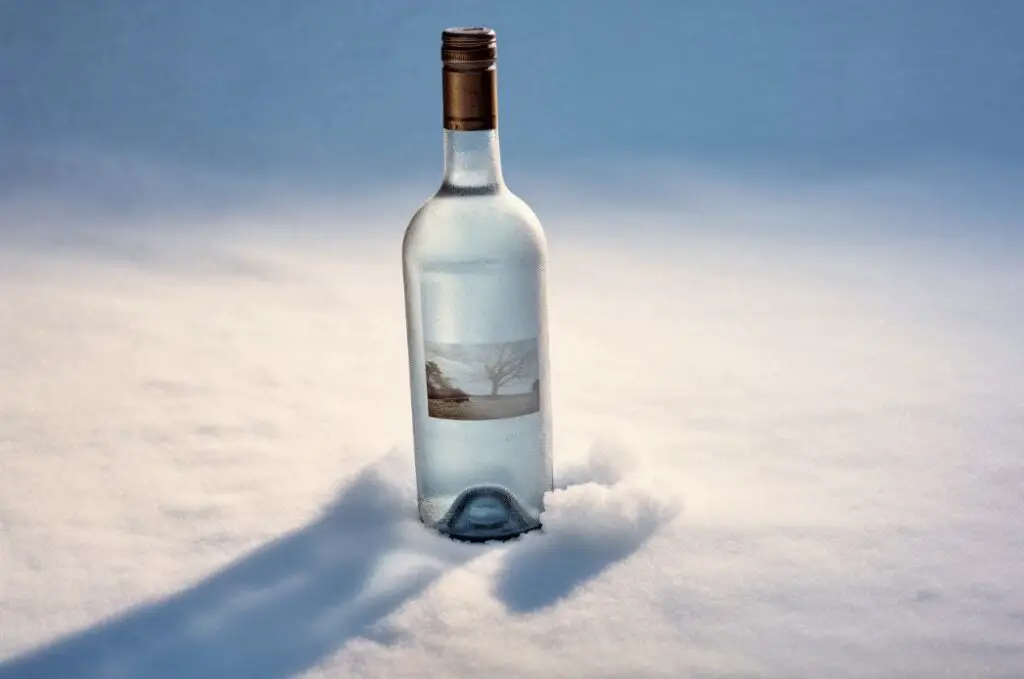
Famed Norwegian explorer Roald Amundsen was the first person to reach the South Pole in 1911. He celebrated by sharing an ice-cold bottle of Aquavit with his team.
In conclusion, Aquavit has complex flavors & traditions rooted in Scandinavian culture.
12. Grappa (An Italian pomace brandy)
Grappa – an Italian pomace brandy full of flavor and complexity! It’s made by distilling grape skins, seeds, and stems leftover from winemaking. Here are the specifics:
| Name: | Grappa |
| Origin: | Italy |
| Color: | Clear |
| Main Ingredient: | Grape Pomace (skins, seeds, stems) |
| Taste Profile: | Bold, fruity with herbal and floral notes |
Did you know that Grappa can only be called so if it’s made in Italy? Other countries must use different names for their similar products. The flavors depend on the type of pomace used – some come from wine grapes while others can include cherries or peaches.
Rumor has it that vineyard owners used to give their workers Grappa as part of their payment. So, it became linked to the working-class culture in Italy.
Not only is Grappa’s origin story intriguing, many producers infuse it with fruits like lemons and coffee beans to create new flavors.
It’s gone from being a worker’s reward to an internationally known spirit, enriching Italy’s winemaking tradition. If you’re looking for a full-bodied drink packed with flavor and mystery, give Grappa a try!
13. Absinthe (A distilled anise-flavored spirit)
Absinthe is a one-of-a-kind, distilled anise-flavored spirit that has been admired by many over the years. Its bright green color and complex taste have made it popular with both occasional drinkers and devoted aficionados. Let’s investigate more about this captivating spirit with the help of this table.
| Type of Spirit | Distilling Process | Base Ingredients | Distinct Flavors |
|---|---|---|---|
| Absinthe | Distilled | Anise, Fennel, Wormwood, Other Herbs and Spices | Minty, Aniseed |
Absinthe has an interesting story. It was once prohibited in some countries due to the opinion that it had hallucinogenic properties. Nonetheless, recent studies have disproved this myth.
Despite its close ties with bohemian culture, Absinthe has found its way into mainstream mixology – thanks to the resurgence of classic cocktail recipes.
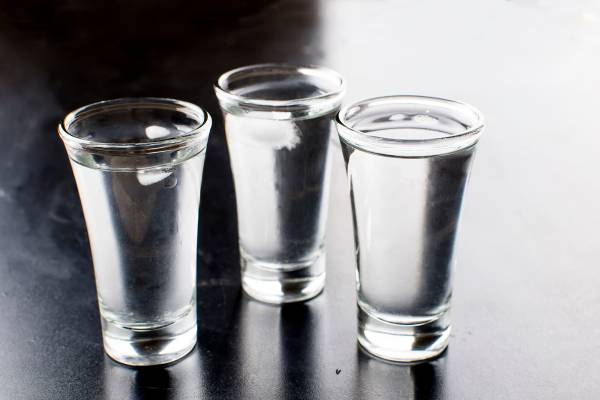
The tale goes that Vincent van Gogh drank absinthe right before he cut off his ear. While this isn’t completely accurate, there is evidence that he often drank absinthe in Paris cafes in the late 1800s. Nevertheless, this engrossing story shows the role Absinthe played in Paris’ “Belle Epoque” period – a time of great development and artistic expression from which modern Paris culture emerged.
Eau de vie: For those moments when you want the flavor of fruit without any nutrition.
14. Eau de vie (A clear fruit brandy)
Eau de vie is a clear fruit brandy, a special kind of liquor. It is made by distilling different fruits like apples, cherries, pears or plums. The name means “water of life” in French.
The Country of Origin, Main Ingredient and ABV % for Eau de vie vary:
- France – Pears – 40-45%
- Austria – Sour Cherries – 37-55%
- Romania – Cornelian Cherry – 28-52%
It has an intense flavor and aroma that comes from the fruit it is made of. History tells us that Eau de vie was distilled by medical alchemists in the Middle Ages, for its healing powers. Over time, it became an alcoholic drink that is enjoyed by many today.

Its local production in different parts of Europe has led to a range of ingredients being used to make specific types.
An example is Blanche Armagnac, which has a French sophistication to it.
15. Blanche Armagnac (A type of French brandy)
Blanche Armagnac is a French brandy with a unique taste. It’s made using white grapes and must be aged in oak barrels for 3 years. Let’s explore its characteristics in a table.
| Characteristics | Description |
|---|---|
| Origin | Gascony, France |
| Primary Ingredient | White Grapes |
| Alcohol Content | Minimum 40% |
| Color | Clear |
| Flavors | Fruity, floral, spicy, woody |
This brandy has an interesting past. It’s been around for over 700 years. It’s said to be the predecessor to cognac. It only undergoes one distillation process which keeps the fruitiness & floral notes.
Back in the day, it had medicinal properties like aiding digestion, boosting the immune system & curing ailments. People drank it for breakfast or after dinner.
To sum up, Blanche Armagnac stands out. Its unique taste & history set it apart from other clear liquors.
Frequently Asked Questions
Q: How is vodka made?
A: Vodka is made by distilling a fermented mixture of grain and water. The mixture is filtered to remove impurities and then flavored or infused with other ingredients.
Q: What is gin made from?
A: Gin is typically made from juniper berries and other botanicals that are distilled with a neutral spirit. The amount and combination of botanicals used will affect the flavor and aroma of the gin.
Q: What is rum made from?
A: Rum is made from sugarcane or molasses that is fermented and then distilled. The rum can be aged in barrels to enhance the flavor and color.
Q: What is tequila made from?
A: Tequila is made from blue agave plants that are grown in certain regions of Mexico. The heart of the plant, called the piña, is roasted and mashed to extract the juice. The juice is then fermented and distilled to make tequila.
Q: How is grappa made?
A: Grappa is made by distilling the pomace, which is the leftover grape skins, seeds, and stems from winemaking. The pomace is fermented and then distilled to make a clear spirit with a strong grape flavor.




